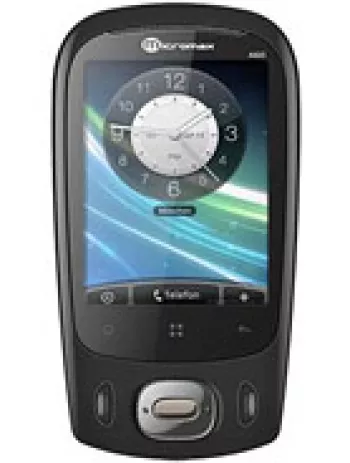
Overview of Micromax A60
The Micromax A60 was one of the pioneer smartphones introduced by Micromax, which aimed at delivering Android experiences to the budget-conscious population. Released in 2010, the A60 was initially marketed as an entry-level smartphone equipped with basic features that suffice the essential needs of smartphone users of that time.
Design and Build
The design of the Micromax A60 was deliberate, aimed at providing a comfortable and practical smartphone experience. With dimensions of 106.8 x 59.2 x 14 mm, the phone was compact, which made it easily portable. It weighed around 105 grams, which added to its ease of use without being too hefty. The device featured a Mini-SIM card slot and was available in a classic black color that appealed to a wide range of users.
Display
The Micromax A60 came equipped with a 2.8-inch TFT resistive touchscreen display, which supported 65K colors. With a screen-to-body ratio of approximately 38.4%, the resolution stood at 240 x 320 pixels, offering a pixel density of about 143 ppi. While these specifications were not high-end, they were suitable enough for users transitioning from feature phones to touch smartphones.
Platform and Performance
Operating on Android 2.1 Eclair, the Micromax A60 featured a 600 MHz CPU. This enabled users to perform basic tasks such as calling, texting, and running lightweight applications. Android 2.1 Eclair provided a user-friendly interface with expansive support for multitasking and downloadable applications from the Android Market.
Memory and Storage
The device came with 150MB of internal storage, which could be expanded through a microSDHC card slot. This expansion capability allowed users to store more apps, music, and photos than the internal memory alone could accommodate. Given the era it was launched in, this level of memory was considered sufficient for entry-level smartphone users.
Camera
The Micromax A60 was equipped with a 3.15 MP autofocus rear camera without any front-facing camera. While the camera specifications were modest, they provided basic photography options. The camera was capable of capturing decent images in favorable lighting conditions and was suitable for users who did not prioritize advanced photographic features.
Connectivity
The device offered several connectivity options, aligning with the technology available at the time. It supported GSM and HSPA technology, enabling 3G connections with maximum download speeds of 7.2 Mbps. Connectivity features included Wi-Fi 802.11 b/g, Bluetooth 2.0 with A2DP, and GPS with A-GPS support. The device also included a USB 2.0 interface.
Battery Life
The Micromax A60 featured a removable Li-Ion 1280 mAh battery. It had a standby time of up to 240 hours and a talk time of up to 4 hours. These specifications provided users with a satisfactory battery experience, especially for those who used the device mostly for calls and basic applications.
Audio and Multimedia
The A60 came with a loudspeaker and a 3.5mm audio jack, offering users the freedom to enjoy music and media with their preferred headphones or external speakers. The audio experience was elementary yet functional, adhering to the standards of smartphones available in the early phase of Android devices.
Sensors and Additional Features
A notable feature was the inclusion of an accelerometer sensor, which aided in the device's orientation detection, enhancing the usability of games and applications requiring motion input. The HTML browser provided an internet browsing experience, though it was limited compared to modern standards. The device did not support FM radio.
Conclusion
The Micromax A60 was a stepping stone for many users stepping into the smartphone world. With its basic yet effective features, it offered an introduction to the Android ecosystem without imposing high costs. Ideal for early adopters looking for simple functionality in a smartphone, the A60 set the stage for Micromax's future successes in the mobile industry. Its discontinued status today stands as a testament to the rapid advancement of mobile technology, although it remains a noteworthy example of the era it was introduced in.
Key Features of Micromax A60
- Supports GSM / HSPA network technology
- Compact size with dimensions of 106.8 x 59.2 x 14 mm and weight of 105 g
- TFT resistive touchscreen with 65K colors
- Powered by Android 2.1 (Eclair) operating system
- 600 MHz CPU for basic tasks
- Expandable storage with microSDHC card slot
- 3.15 MP main camera with autofocus
- Support for Wi-Fi and Bluetooth 2.0 with A2DP
- Equipped with GPS and A-GPS for navigation
- Includes a 3.5mm audio jack and loudspeaker
- Removable Li-Ion 1280 mAh battery
- Affordable pricing at approximately 60 EUR
Disadvantages of Micromax A60
- Discontinued Model: The device is no longer produced or supported, limiting access to updates and repairs.
- Resistive Touchscreen: Less responsive compared to modern capacitive touchscreens.
- Small Display: The 2.8-inch screen with a low resolution of 240 x 320 pixels may not provide a satisfying viewing experience.
- Low Internal Storage: Only 150MB of internal storage limits app installation and media storage.
- Old Android Version: Android 2.1 (Eclair) is outdated and lacks support for modern apps and features.
- No Front Camera: Lacks a front-facing camera for selfies or video calls.
- No FM Radio: Missing a built-in radio feature.
- Limited Battery Life: With a 1280 mAh battery, the device offers up to only 4 hours of talk time.
View Also
More Phones
All Rights Reserved +14266 Phones © Mobilawy 2025

























